Abstract
Hyalomma marginatum marginatum of Europe and Asia and H. marginatum rufipes of Africa, both reservoirs and vectors of organisms pathogenic to humans and animals, have not infrequently been found as incidental specimens or established populations far from their normal endemic geographical boundaries. Owing to ticks' unique ability to transmit or harbour for long periods a variety of pathogens of man and animals, their potential epidemiological role is suspected wherever they occur. Evidence that birds, in themselves hosts of several viruses causing human disease, actually transport the African H. marginatum rufipes northwards was obtained in Egypt by capture of infested migrants during spring passage from East Africa to Europe and Asia. Between 1956 and 1960, 340 birds representing 22 forms (species and subspecies) were found infested by 1025 immature ticks, all but seven of which were or appear to be H. marginatum rufipes. The period of attachment of immature stages of rufipes to their host is sufficient to suggest that many of these ticks are carried some distance into Europe and Asia.
Full text
PDF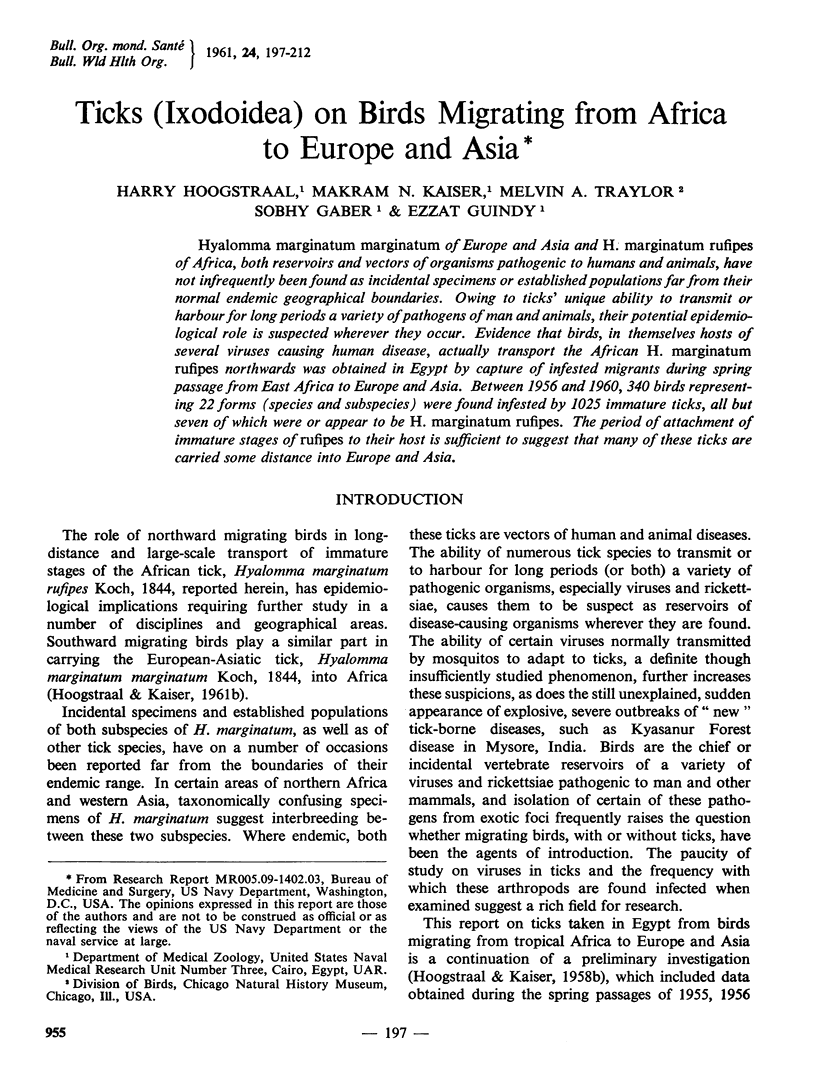
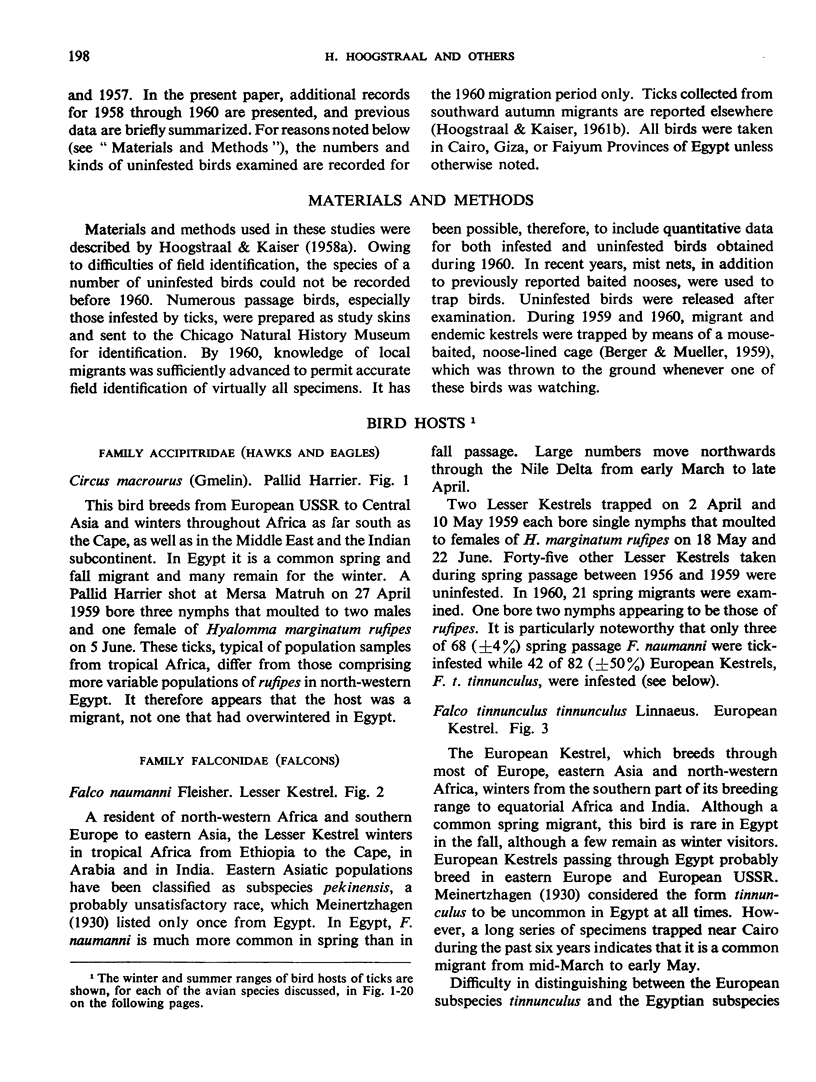
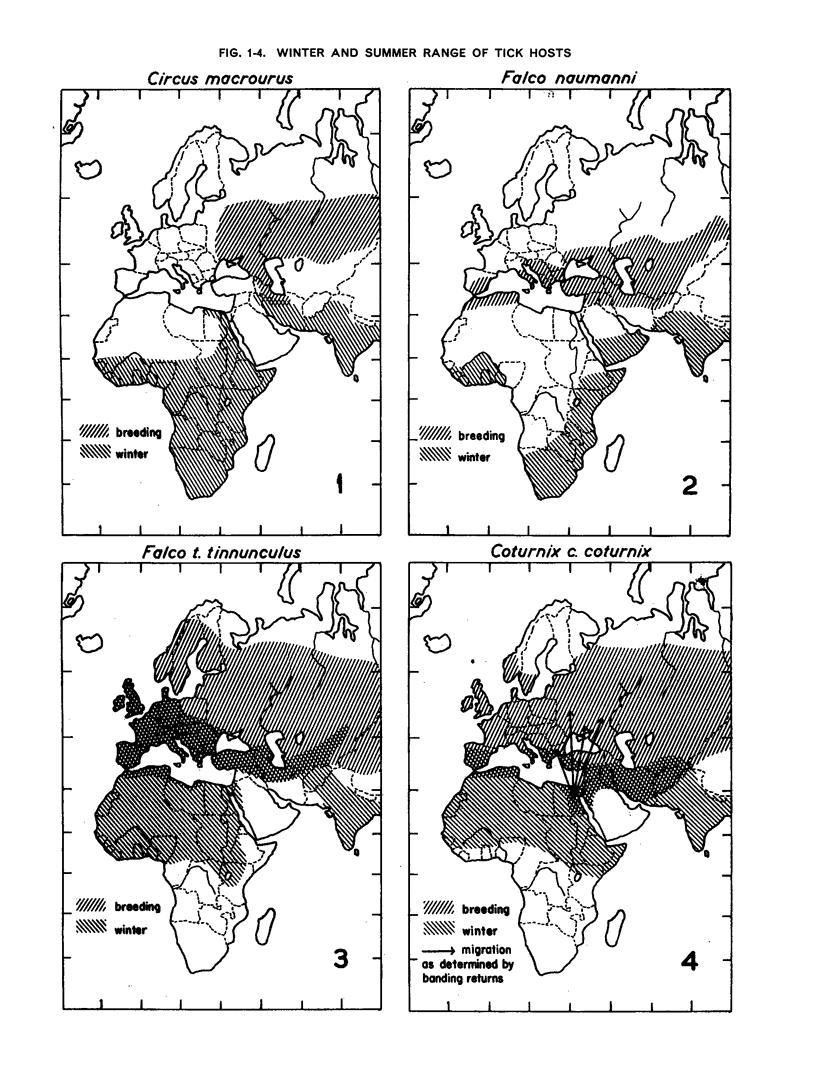
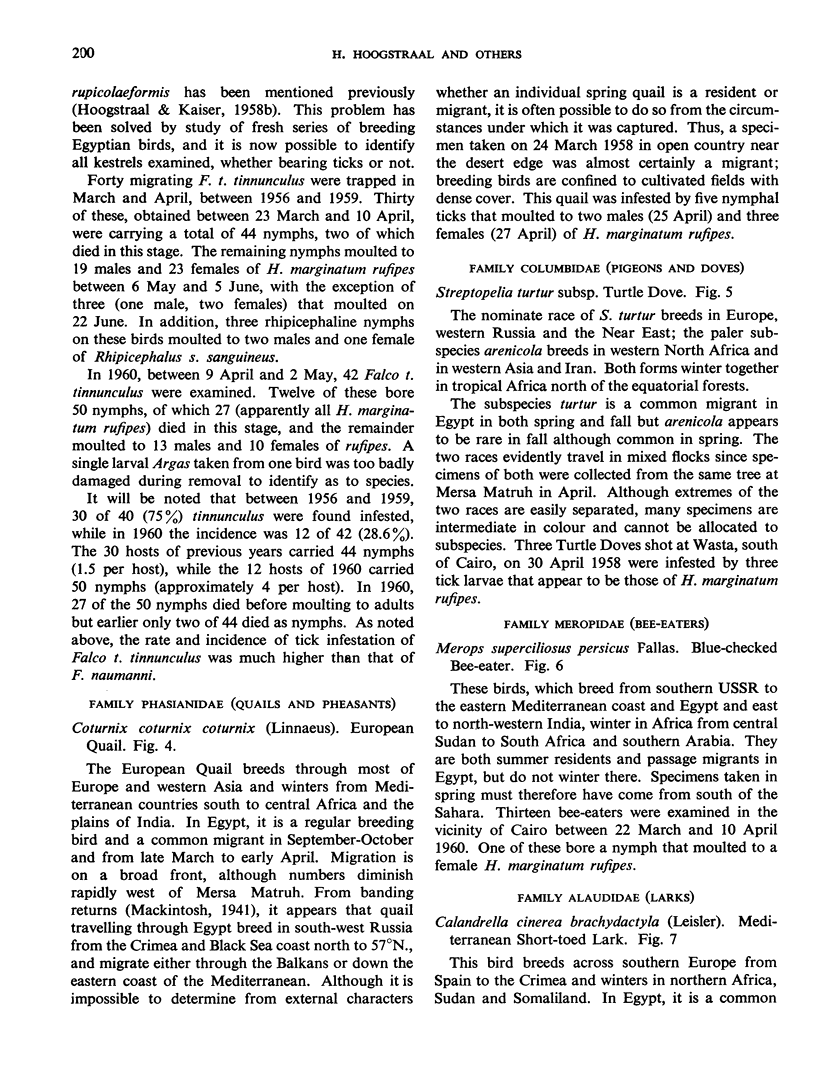

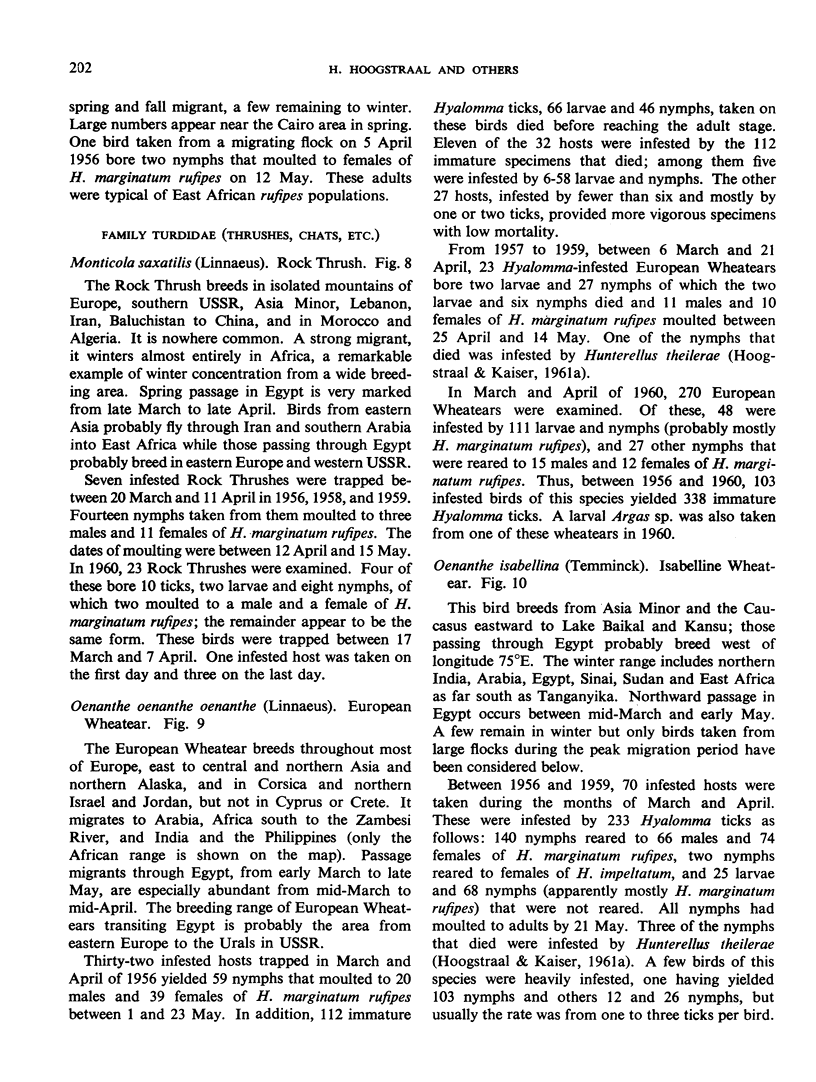
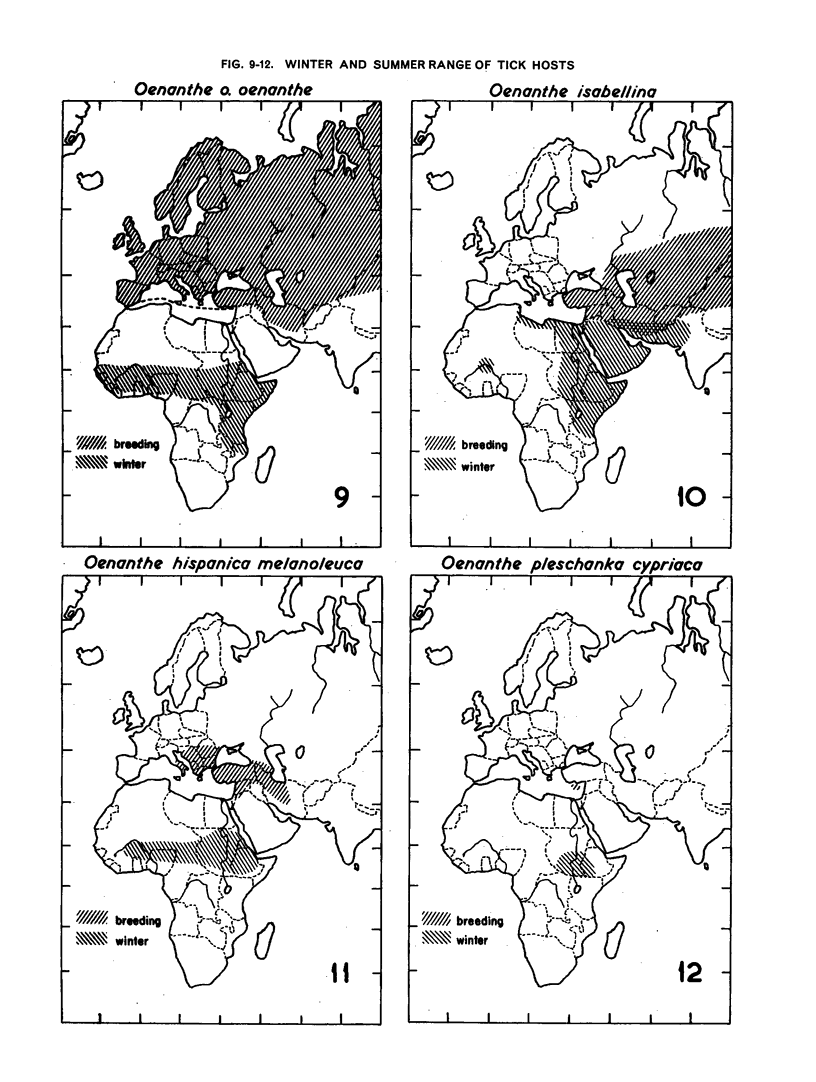
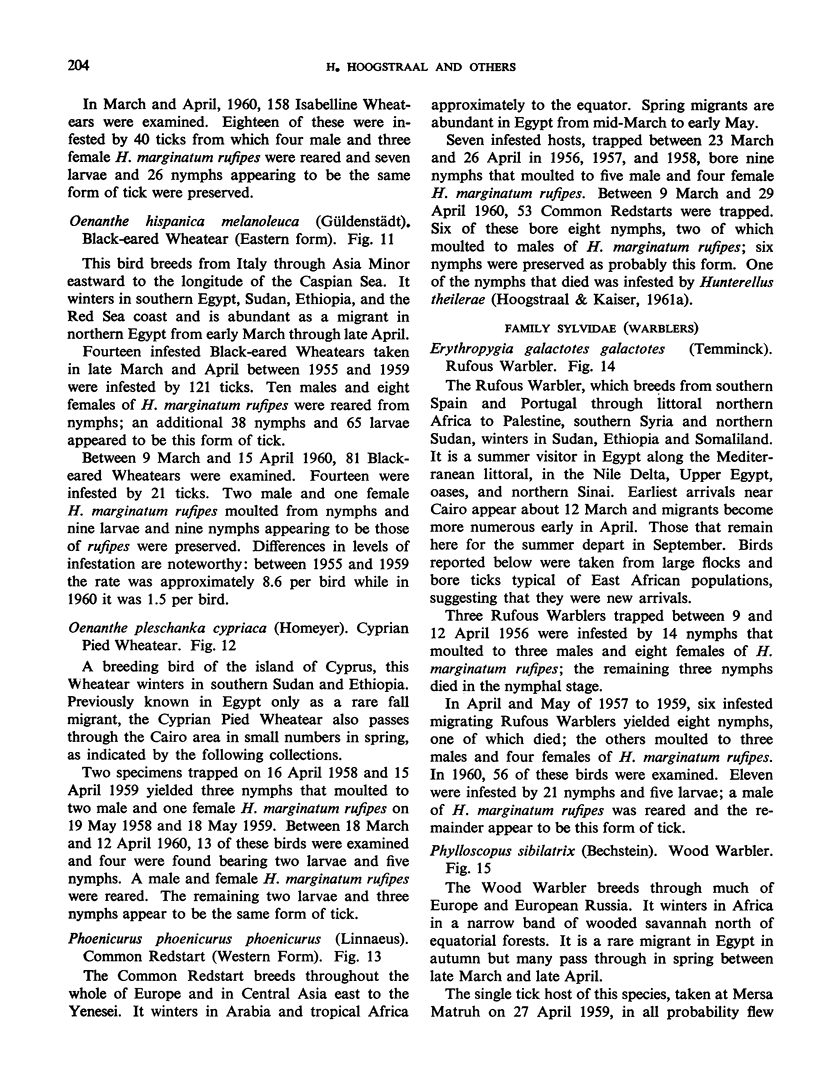
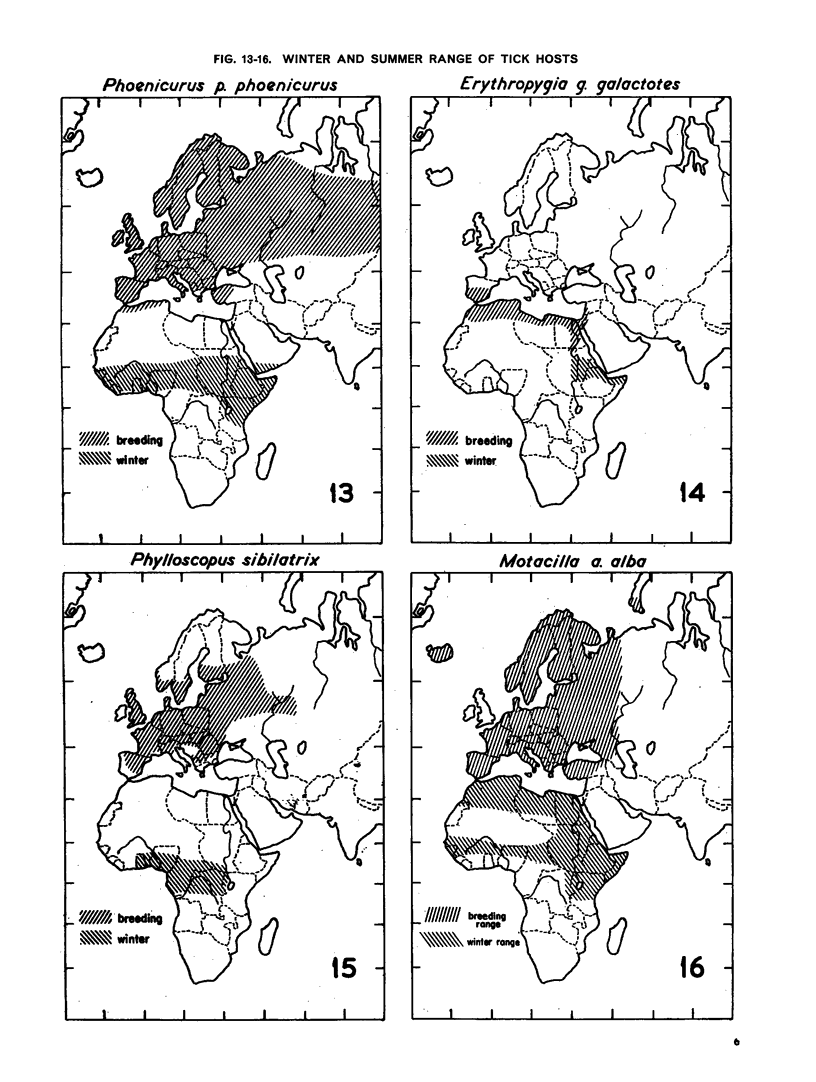



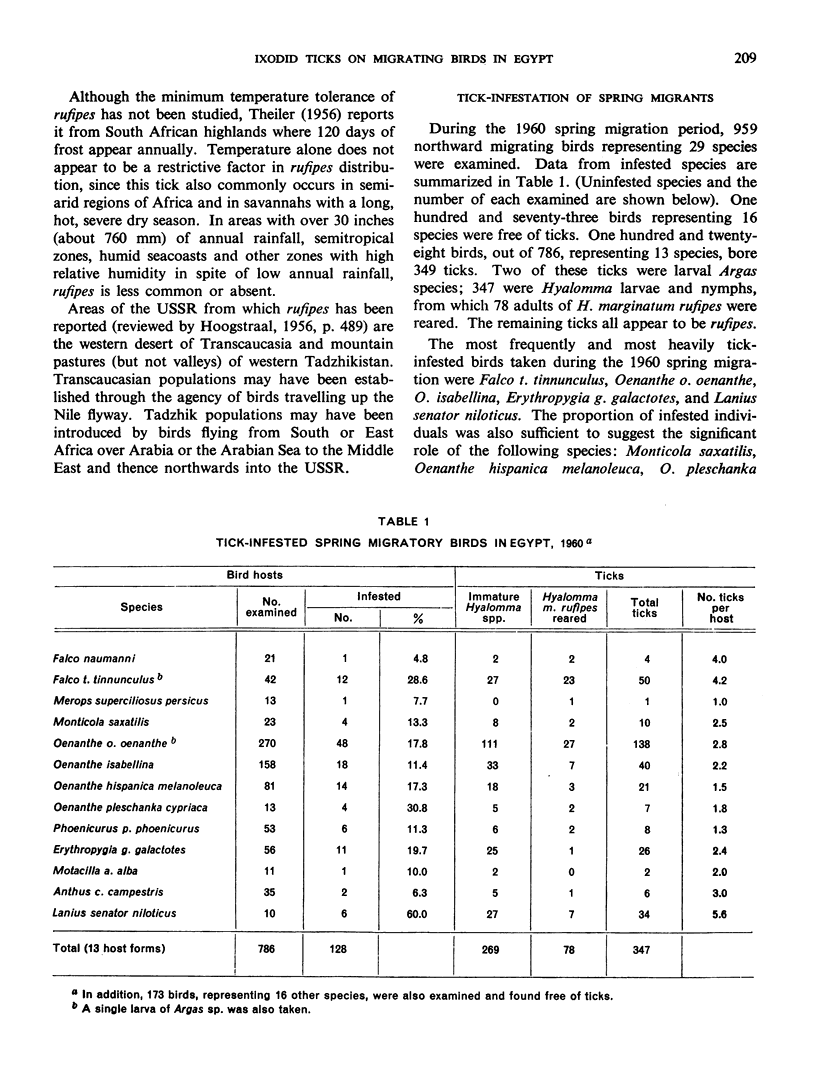


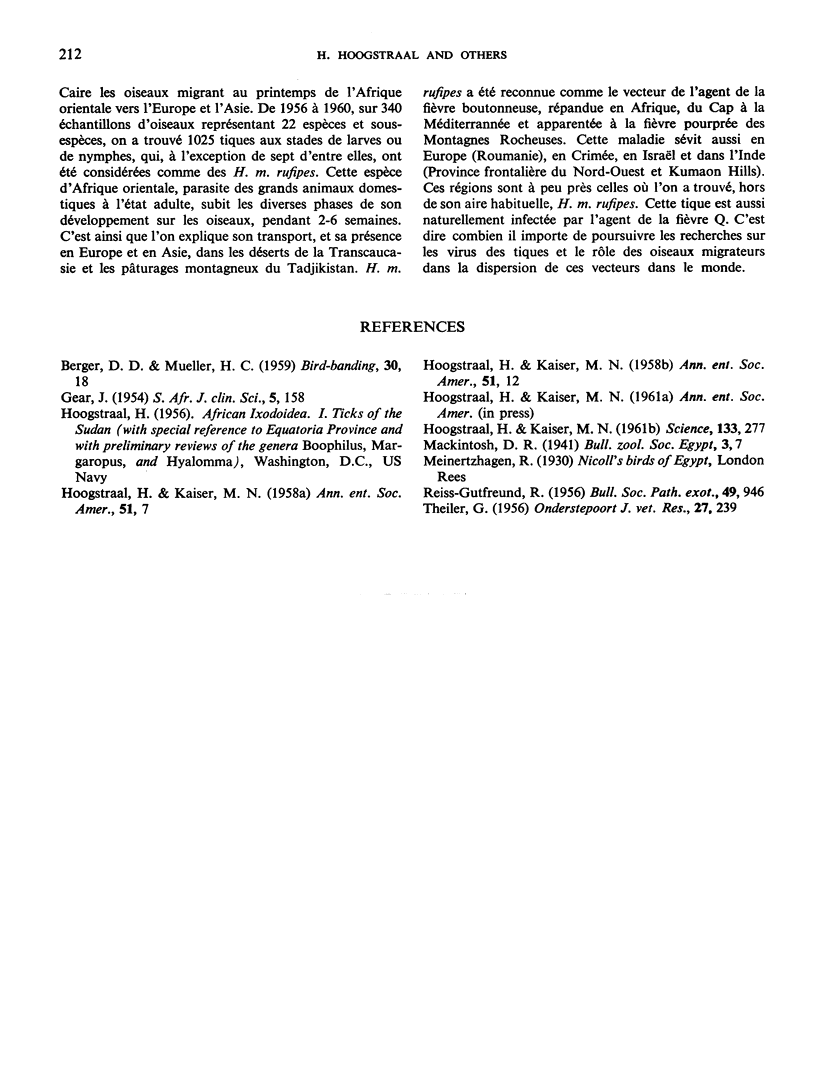
Selected References
These references are in PubMed. This may not be the complete list of references from this article.
- GEAR J. The rickettsial diseases of Southern Africa; a review of recent studies. S Afr J Clin Sci. 1954 Sep;5(3):158–175. [PubMed] [Google Scholar]
- HOOGSTRAAL H., KAISER M. N. Ticks from European-Asiatic birds migrating through Egypt into Africa. Science. 1961 Jan 27;133(3448):277–278. doi: 10.1126/science.133.3448.277. [DOI] [PubMed] [Google Scholar]
- REISS-GUTFREUND R. J. Un nouveau réservoir de virus pour Rickettsia prowazeki: les animaux domestiques et leurs tiques. Bull Soc Pathol Exot Filiales. 1956 Sep-Oct;49(5):946–1023. [PubMed] [Google Scholar]


